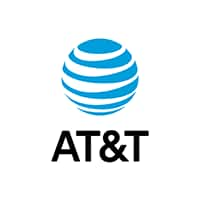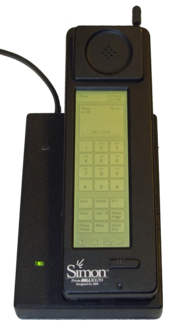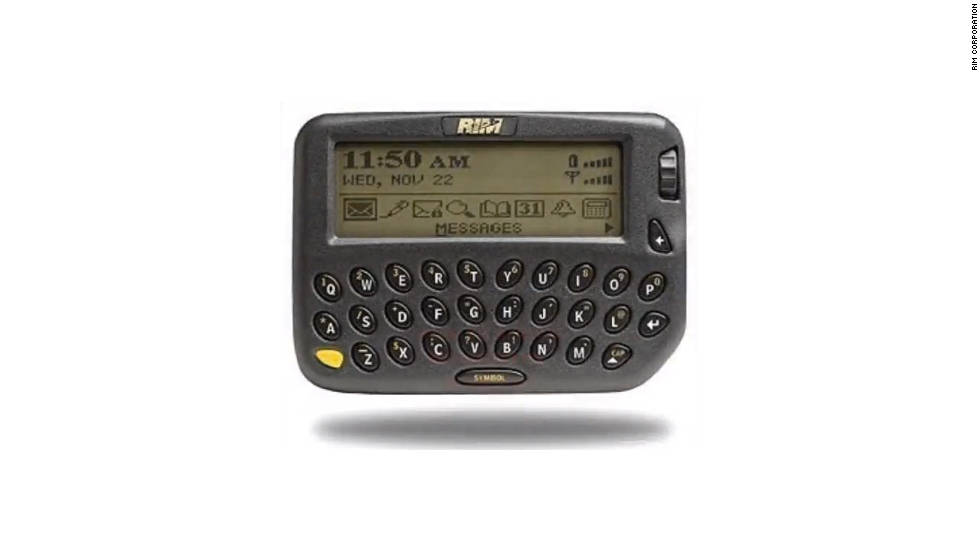Mobile Phones, Cell Phones, Mobile Handsets
The world’s first cell phone was launched in 1983. It was the Motorola DynaTAC 800x. It was priced at around $4,000 and lasted for 30 minutes of talk time before dying. It was also about the size of a foot long sub from Subway.
 |
| Pretty Small |
Despite the phone’s large size, it was still considered to be the most portable telephone ever made. For the first time in history, a human being could call someone without the constraints of wires or portable phone holders.
Prior to the release of the Motorola DynaTAC 8000x, several major developments had paved the way for the first cell phone.
In 1908, for example, one man claimed to have invented a wireless telephone. That man was considered so crazy for his time that he was accused of fraud. The charges were later dropped.
Later, during the First World War, the German military tested wireless phones on military trains running between Berlin and Zossen. Later, in 1924, wireless phones were tested on trains running between Berlin and Hamburg.
During the Second World War, military forces around the world made use of radio telephony links. Starting in 1940, hand-held radio receivers had been widely available, opening up communications in battlefields around the world.
All of these technologies inspired researchers at Bell Labs to create a mobile phone system for vehicles. This system would allow users to place and receive calls from inside their automobiles.
By June 17, 1946, Bell Labs had begun to offer mobile telephone services on vehicles in St. Louis, Missouri. A few weeks later, AT&T matched Bell Labs, offering something called Mobile Telephone Service, which was a wide range of mostly incompatible mobile telephone services that offered limited coverage areas and a small number of available channels.
Eventually, AT&T and Bell Labs would introduce cellular technology, which allowed for the re-use of frequencies multiple times in areas covered by low-powered transmitters. This allowed mobile phones to be more than just a pipe dream: they were an economically feasible product that could make money for Bell and AT&T.
America’s short-lived experiment did not lead to the widespread use of mobile phones. It was a niche product that appealed only to a small number of consumers in one city.
Nevertheless, the seeds of mobile telephony had been planted in the minds of Americans.
Surprisingly, the USSR was the next major nation to develop mobile phones.
Between 1957 and 1961, Soviet inventor Leonid Kupriyanovich developed a number of mobile phones that looked surprisingly similar to modern mobile devices. One of Leonid’s phones weighed just 70 grams and could easily fit into the palm of your hand.
The Soviet Union decided to push forward with plans to develop these mobile devices. They called the phone the “Altai” and designed it for use in cars.
In 1949, AT&T launched something called Mobile Telephone Service. We mentioned this service above as part of the automobile cell phone section. This Mobile Telephone Service was initially only available in St. Louis. By 1948, however, the service was available in about 100 towns.
With this service, an estimated 5,000 customers placed approximately 30,000 calls each week. Each call had to be manually connected by an operator. The system also functioned similar to a Walkie-Talkie: you had to push down a button your handset to talk, then release that button to listen.
If you wanted the Mobile Telephone Service in your vehicle, then you had to install about 36kg of equipment.
Other limitations of this system were:
- Only three radio channels were available, which meant only three customers in any city could make a call at once
- It was expensive, costing approximately 15 USD per month plus an additional $0.30 to $0.40 per local call. In today’s dollars, that’s nearly $200 USD per month and $4 to $4.50 per local call.
A similar service evolved in the UK soon after AT&T’s Mobile Telephone Service. That system was called the Post Office Radiophone Service, and it was launched in Manchester in 1959.
This system also required callers to connect through an operator. However, that operator could connect users to any subscriber across all of Great Britain. London received Post Office Radiophone Service in 1965 and it branched out to other major cities across the UK in 1972.
The original Mobile Telephone Service (MTS) offered by AT&T was soon supplanted by Improved Mobile Telephone Service (IMTS).
AT&T heard the complaints of its customers and sought to address them. They added more radio channels, for example, which meant more simultaneous calls could be placed in each geographic area.
The system also featured improved customer dialing. Customers no longer had to call the operator to setup each call. The subscriber equipment also no longer weighed 36kg.
Nevertheless, IMTS was still a far cry from modern cell phone systems. Demand quickly outstripped the capacity of the system. There were many reports of customers waiting 30 minutes or more to place a call. It got to a point where state governments were forced to restrict service to just 40,000 customers across the entire system. Still, in larger cities like New York City, 2,000 subscribers were forced to share 12 radio channels – which is what led to the long wait times.
In an effort to compete with AT&T, independent American telephone companies introduced something called Radio Common Carrier, or RCC. This system used frequencies near the IMTS frequencies. This system persisted until the 1980s, at which point cell-based AMPS systems made RCC equipment obsolete.
This loosely-organized system discouraged roaming and came with a complicated billing system and complicated, expensive set of equipment. It provided the next-best alternative to AT&T’s Mobile Telephone Service, but that was about it.
Europe, like America, developed its own series of mobile radio networks. The most noteworthy networks could be found in West Germany, which initially launched the A-Netz network in 1952 and then the B-Netz network in 1972.
Norway also had its own system called OLT where operators manually connected calls to one another.
Up to this point, all of these networks relied on radio technology instead of genuine cellular technology. Throughout the latter half of the 20th century, however, researchers would work on creating cellular networks that expanded cell service across America.
In 1947, Bell Labs engineers were already looking for ways to implement cell service in vehicles. These researchers theorized that hexagonal cells would work best for vehicles.
However, it wasn’t until the 1960s that researchers created the technology systems – like frequency reuse and handoff – that would lead to modern cellular networks.
In 1973, 10 years before a cell phone was first released onto the market, the first cell phone call was made by Motorola researcher and executive Martin Cooper. Cooper, from Motorola, placed a call to Dr. Joel Engel of Bell Labs.
The call on which this phone was made was an early prototype of the DynaTAC mobile phone. It weighed 1.1kg and was 23cm long.
However, the stage was set: researchers knew that if they could create wireless communications technology that was smaller, there would be a market for it.
“1G” refers to the first automated analog cellular networks around the world. 1G was first deployed in Tokyo in 1979 and would spread throughout the rest of Japan in 1981. Sweden, Norway, Finland, and Denmark also received 1G that same year.
It took two more years before 1G technology was first introduced in the Americas. In North America, the first 1G network was called the Advanced Mobile Phone System, or AMPS.
This network suffered from some major security issues. The network was unencrypted, for example, and easily vulnerable to eavesdropping using a basic scanner.
This didn’t prevent the world’s first cell phone, the DynaTAC mobile phone, from launching on the 1G network on March 6, 1983. People didn’t care about security at this point: they just thought it was really cool they could own a mobile phone and call people across the nation.
Released on March 6, 1983, the DynaTAC mobile phone was priced at a whopping $3,995 when it hit the market.
The phone could last for about 30 minutes of talk time. Motorola spent $100 million and over 10 years developing the device.
Despite the high price tag, poor battery life, heavy weight, and all its other flaws (at least compared to modern devices), the DynaTAC mobile phone was wildly successful: waiting lists numbered in the thousands.
By 1990, the old AMPS networks were replaced by Digital AMPS (D-AMPS). By 2008, all AMPS service was shut down across North America, marking the end of an era.
Released on March 6, 1983, the DynaTAC mobile phone was priced at a whopping $3,995 when it hit the market.
The phone could last for about 30 minutes of talk time. Motorola spent $100 million and over 10 years developing the device.
Despite the high price tag, poor battery life, heavy weight, and all its other flaws (at least compared to modern devices), the DynaTAC mobile phone was wildly successful: waiting lists numbered in the thousands.
By 1990, the old AMPS networks were replaced by Digital AMPS (D-AMPS). By 2008, all AMPS service was shut down across North America, marking the end of an era.
The first smartphone was probably released earlier than you expected: many call 1993’s IBM Simon the world’s first smartphone.
Compared to today’s standards, the world’s first smartphone looked pretty stupid: it was a calendar, address book, clock, notepad, PDA, email service, QWERTY keyboard, and touchscreen all rolled into one. It also featured a stylus and predictive typing. It even had apps!
The phone sold moderately well across the United States, selling 50,000 units between August 1994 and February 1995.
The Simon Personal Communicator, as it was known, sold throughout Bell’s 15 state service area at a price of $899 (on a two year contract) or $1099 (without a contract).
2G introduced cellphone networks to people around the world. Suddenly, everyone needed a mobile phone in their daily lives.
Before long, demand had outstripped existing 2G technology. People wanted to do more than just call: they wanted to browse the internet at faster and faster speeds.
It became clear that 2G technology was not able to keep up. Thus, 3G started to roll out around the world. Once again, the world’s first 3G network was launched in Tokyo. Tokyo received the technology in May 2001.
The main advantage of moving from 2G to 3G was that 3G used packet switching instead of circuit switching to transmit data. This allowed for faster data transmission speeds (2 Mbit/s data rates, for example).
This opened the door for media streaming over mobile networks. For the first time, mobile devices were fast enough to support online video and music streaming.
By 2007, there were 295 million 3G users around the world. That may seem impressive, but that number accounted for only 9% of the total worldwide number of mobile users.
Before the end of the first decade of the 21st century, it was clear that 3G was being overwhelmed by the number of bandwidth-intensive applications. Carriers realized that it was time to bump up to 4G.
4G’s main improvement over 3G technology was its data-optimization, which promises to offer speeds up to 10 times faster than existing 3G technologies. Two different 4G technologies were developed, including the WiMAX standard and the more popular LTE standard.
In addition to the early phones we mentioned above (like the DynaTAC and IBM Simon), here are some of the other notable phones released between 1990 and present day:
Nokia 6110 – 1997
Rumor has it this phone could survive a nuclear explosion. You could throw this phone off buildings, drop it on the floor, and nothing seemed to phase it. It also had a whopping three (!) games, including the ever-popular Memory, Snake, and Logic. Oh, and did I mention it worked as a pager and came in four different colors? Yeah, this phone was a big deal.
Motorola StarTAC – 1997
The most notable part of this phone was that it was the world’s first “clamshell” phone, also known as the flip phone. Reportedly inspired by the communicator from Star Trek, the Motorola StarTAC was designed for 2G networks.
BlackBerry 850 – 1999
Based on the name, you might think the BlackBerry 850 was the 8th or even the 850th phone released by RIM. But it wasn’t – it was the very first BlackBerry. Ten years later, RIM (now named BlackBerry) was titled the fastest growing company on the planet. We don’t have to talk about what happened after 2010. Sorry, BlackBerry fans.
Samsung SGH-T100 – 2000
Samsung’s early phones looked nothing like the modern day Galaxy lineup. They looked like average clamshell phones. But they already showed early signs of Samsung’s future smartphone dominance: like a bright, vibrant screen. The Samsung SGH-T100 was the first phone to ever use a thin-film transistor active matrix LCD screen.
BlackBerry 5810 – 2003
Like the Original BlackBerry 850, the BlackBerry 5810 had a QWERTY keyboard. This keyboard, however, looked closer to what we would find in later BlackBerry devices. Other notable features included email support and apps for printing, calendar, music, alarm, and much more.
Motorola Razr V3 – 2004
If you had one of these in high school, you were the coolest kid in class. The Motorola Razr V3 featured a sleek exterior and a satisfying “clap” sound when it closed shut. The Razr would eventually become one of Motorola’s bestselling phones ever: the company sold 130 million between 2004 and 2006.
BlackBerry 7270 – 2005
This was the first BlackBerry device that came with Wi-Fi. It’s easy to see why the term “Crackberry” became so widespread after the release of the BlackBerry 7270. This was also the first BlackBerry to feature a color display.
Apple iPhone 3G – 2008
This is the phone that changed the game forever. Do we really need to say anything about the iPhone that you don’t already know? The iPhone introduced millions of people to apps, made touchscreen interfaces the norm, and had the most attractive design of any mobile released to date.
Galaxy Nexus – 2011
Prior to the Nexus, Android was a little-used operating system in development from Google. After the Nexus, Android was a competitor to iOS in the mobile operating system world. The Nexus was the first good Android smartphone and was a strong predecessor to one of the most popular Androids of all time – the Galaxy S3.
Samsung Galaxy Note – 2011
The Galaxy Note is on this list because Samsung had the foresight to build a stupidly large smartphone. We all thought it was stupidly large at the time, but a few years later, the Note’s 5.3-inch screen is on the lower end of larger smartphone displays. Samsung was making phablets before it was cool.
We’ve come a long way from the early days of cell phones that weighed 32kg and fit into the trunk of your car. Today, you have a phone within arm’s reach that you probably checked 5 times while reading this article. It’s okay: we all do it.

















Fast Mac repairs in London. Express Apple MacBook laptop repair service available in our London office or UK wide using our convenient and fast collection and delivery based repair. Call 020 3951 7818 to book your repair now. for more details here : https://irepairmacs.co.uk
ReplyDelete